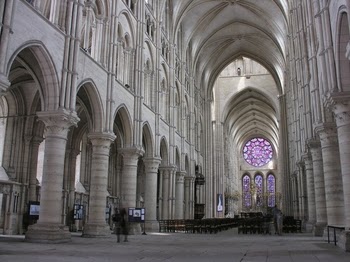VOICES
In the late 70's, Eugene Morton, a zoologist e ornithologist with the National Zoo, studied the relation between the pitch of voices from mammals and birds and came to very interesting conclusions:
We, as other animals have the same perception of pitch: bass sounds usually communicate danger, dominance and aggression and treble sounds do the opposite: calm, empathy and submission.
When a dog wants to warn us, it will growl, which means that he's desperately trying to sound as low pitched as it can.
But, if it want to show submission, it will yelp, which is probably they highest sound on its repertoire.
One exception is the cat purr, however it's a very soft and low, almost a private sound.
The same with people. When we smile, the vocal cavity is reduced and our voice's pitch is slightly raised. We don't need to look at someone to tell he's smiling. We can tell by the sound of his voice.
When we want something from our girlfriend, we naturally pitch our voice as high as possible and speak as soft as we can, in order to show some submission and, maybe, get something from of her. It doestn' always work. :-)
 |
| Will you...? |
Herbert Casson, a Canadian journalist, described in 1910, how the first telephone exchanges were loud because the switchboards were operated by young men. One can understand, switchboard is a machine and machines are for men!
Then, someone thought about replacing the male operators with women.
"The quiet voice, high pitched...these qualities were precisely what the gentle telephone required in its attendants", says H. Casson
Due to my profession, I have visited a lot of Hospitals and healthcare environments that use a male voice in a harsh tone in elevators and other public announcements, without even realizing how a simple change could do so much to help their clients reduce their understandable anxiety.
We use voice to communicate. Let's do it with wisdom.
Ref. "In Pursuit of Silence", George Prochnik, pages 71, 72
VOZES
Nos anos 70, Eugene Morton, um zoólogo e ornitólogo do Zoo Nacional, estudou a relação entre a altura das vozes de mamíferos e aves e chegou a algumas conclusões muito interessantes.
Nós, como todos os outros animais, temos a mesma percepção da altura das vozes: sons graves geralmente comunicam perigo, domínio e agressão, enquanto que os sons agudos fazem o oposto: calma, empatia e submissão.
Quando um cão nos quer atacar, rosna, o que não é mais do que a sua tentativa máxima de soar tão grave quanto possível.
Mas, se ele quiser mostrar submissão, irá ganir, que será, provavelmente, o som mais agudo do seu repertório.
Um excepção é o ronronar do gato, de qualquer modo muito fraco e suave, quase um som privado.
Acontece o mesmo com as pessoas. Quando sorrimos, a nossa cavidade oral reduz o seu tamanho e a nossa voz é ligeiramente subida em altura. Não precisamos de estar a olhar para alguém para sabermos que está a sorrir. Conseguimos "vê-lo" através do som da sua voz.
Quando queremos algo da nossa namorada , naturalmente colocamos a nossa voz, no tom mais agudo que podemos e falamos o mais suave que conseguimos, de forma a mostrar submissão e, talvez, conseguirmos alguma coisa dela. Nem sempre resulta. :-)
 |
| Queres...? |
Herbert Casson, um jornalista Canadiano, descreveu em 1910, como as primeiras centrais telefónicas eram desagradáveis, operadas por jovens homens. Percebe-se, a central telefónica era uma máquina e as máquinas eram para os homens!
Até que, alguém se lembrou de substituir os operadores por mulheres.
"A voz suave, aguda...estas qualidades eram precisamente aquelas que as companhias telefónicas procuravam nos seus telefonistas", dizia H. Casson
Devido à minha profissão, tenho assistido, incrédulo, ao elevado número de hospitais e instituições de saúde que usam a voz masculina num tom bastante áspero nos elevadores, centrais de doentes e outras comunicações gravadas sem sequer se aperceberem do que, uma simples mudança, poderia significar na redução da ansiedade natural dos seus utentes.
Usamos a voz para comunicar. Façamo-lo com sabedoria.
Ref. "In Pursuit of Silence", George Prochnik, pags 71, 72
Ref. "In Pursuit of Silence", George Prochnik, pags 71, 72

































